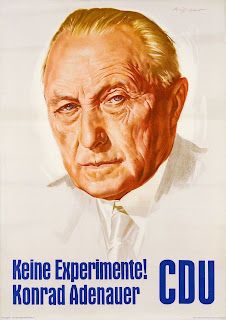Challenges Continue To Mount For Junior/Intermediate Oil Companies As Commodity Prices Lag And Policy Changes Add To Uncertainty
By: Paul Wells
Article originally posted by the Daily Oil Bulletin on Dec 23, 2015. It has been altered slightly, and it has insight from EPAC President, Gary Leach. Original article can be found here: http://www.dailyoilbulletin.com/article/2015/12/23/challenges-continue-mount-epac-member-companies-co/
Article originally posted by the Daily Oil Bulletin on Dec 23, 2015. It has been altered slightly, and it has insight from EPAC President, Gary Leach. Original article can be found here: http://www.dailyoilbulletin.com/article/2015/12/23/challenges-continue-mount-epac-member-companies-co/
The
Canadian oilpatch has witnessed a monumental shift this year in the political
environment under which the industry operates, not only provincially in
Alberta, but federally as well.
In
essence, the climate change policy in Alberta has been sold by the government
as necessary to secure pipeline approvals, and support generally for the
industry, both on the national front and abroad.
To
wit, while unveiling its new climate change strategy, the government received
support on the stage from both environmental non-government organizations and
some heavyweight industry CEOs. But will these new policies, in terms of
oilsands emissions caps and planned methane emission reductions, achieve the
desired goal of support for infrastructure projects, or will it just turn into
another hoop for industry to jump through, as some fear?
Leach
said the political changes in the last six months, both federally and in
Alberta, have been “sweeping and de-stabilizing” for an industry already facing
major challenges. And, at least at this point, it’s a wait-and-see scenario
that has yet to fully play out.
“Who,
this time last year, could have predicted the current political landscape?
Forty-four years of Progressive Conservative government in Alberta swept
aside by a completely untested NDP that had never been more than a
small, irrelevant opposition party,” Leach said.
“And
federally, we had nearly a decade of Stephen Harper’s steady
Conservative government … although let’s not forget how they stunned and
angered our industry when they wiped out the trust structures in the early
years of their government,” Leach said.
Leach
noted that the industry are still working to build new working arrangements and
channels of communication with a government in Alberta that, “at best,
previously had a distant and cool relationship” with the industry.
“Having
said that, the [Rachel] Notley government does seem prepared to
put its weight behind the Energy East pipeline and, less visibly, the Trans
Mountain project to Vancouver. The trade-off is the massive re-orientation of
the energy sector in the province: phasing out coal, bringing in more natural
gas and renewable power, and the centrepiece: a big re-distribution of money
via a carbon tax.
Federally,
Leach said that industry is starting to re-build contacts with the Justin
Trudeau-led Liberal government.
“The
Trudeau election campaign was pretty short on details about the energy
sector. But it seems clear they will design their policy framework for
our industry primarily through the climate change and GHG reduction lens,”
Leach said.
The carbon tax conundrum
Leach
said that the current design of the Alberta carbon tax is something EPAC and
its membership have “serious concerns” about.
Unlike
British Columbia’s “revenue neutral” carbon tax, Leach noted that Alberta has
made no attempt to use this money to reduce the overall burden on taxpayers.
“In
Alberta the money collected will be distributed as directed by the government
to subsidize renewable power generators, incentivize selected technologies and
efficiency programs, and reduce the cost of the carbon tax for lower income
Albertans,” he said.
Leach
added that the economy-wide carbon tax to be imposed on Alberta businesses and
consumers is deductible for royalty payments only by the oilsands sector.
“Thus
the conventional sector is distinctly disadvantaged relative to the oilsands
sector, let alone our competitors elsewhere in North America who don’t shoulder
this type of cost. We have urged the royalty panel to take this into account in
their recommendations, particularly to level the playing field with the oilsands
sector,” he said.
“We
know this carbon tax and the oilsands emissions caps are being promoted as a
way to reduce opposition to new pipeline construction. But the carbon cost is a
definite hit to cost competitiveness for Alberta producers whereas the promise
of new pipelines is just that — a promise with no guarantee. In fact, the new
Trudeau government has said it will move ahead with a re-design of the National
Energy Board’s [NEB] mandate to include a broader evaluation of
environmental impacts.”
So,
what does this mean for pipeline projects currently in front of the NEB or on
tap — is the Canadian oil and gas industry ahead or behind? Time will soon tell.
“The
first one up is the Kinder Morgan [Inc.] pipeline expansion to
Vancouver, which will be decided by the NEB sometime in 2016. So this will be
in front of Trudeau’s cabinet fairly soon … and we’ll know then whether the
rhetoric around Alberta’s improved image is indeed providing momentum to
advance new pipeline projects,” Leach said.
The shift away from coal-generated electricity. Is this a positive for the Oil and Gas Industry?
A
vital part of the provincial government’s climate change plan is the phase-out
of coal and a shift to more renewable and natural gas generation.
However,
Leach said that the government has not disclosed “how many billions of dollars”
it could cost taxpayers to compensate the owners of coal-fired power generation
facilities that would be forced to shut down decades earlier than originally
planned.
“The
government will offer incentives to renewables, like wind and solar, and
natural gas will also be expected to take up an increased share plus be
available as an expensive redundant back up for the unreliability of wind and
solar power generation,” he said.
“Overall
this will drive a significant increase in demand for natural gas in Alberta,
which is important to producers here because it will be a struggle to compete
in traditional markets in Eastern Canada or the U.S. Perhaps we’ll see some
additional gas demand growth in Saskatchewan for the same reason, although the
power market there is much smaller than Alberta.”
The
bottom line, though, is Leach doesn’t see an Alberta electric power shift as
favouring any particular segment such as junior, intermediate or senior
producers. “As always, lower cost producers will benefit most.”
The future role of juniors
With
lower oil and natural gas prices, the role that smaller producers play going
forward could change. Will we see an erosion of the junior/intermediate sector
and a move into a new world where the small and micro juniors disappear; in
other words, will we see fewer but larger producers in Western Canada? Will we
see a change in business models? How does the sector survive?
Leach
is confident many member companies will adapt to the new reality. However,
there will be casualties.
“The
last few years have seen old business models discarded and new leaders emerge.
This has been driven by trends that are relentless — selective market sentiment
that favours larger, more liquid companies, the need to scale-up to develop
resource play opportunities, increasing regulatory compliance costs and
stronger balance sheets to survive extended periods of low commodity prices,”
he said.
That
said, the largest companies have more options to adjust as they can pursue
opportunities elsewhere, rationalize their portfolios, unload assets or sell
debt to raise cash and focus on their best projects.
“This
flexibility has not been open to many small producers. One obvious sign is that
the number of publicly-traded juniors is much smaller than a decade ago,” Leach
said.
“Private
equity has emerged as a more visible factor. The larger junior and intermediate
producer segment is much healthier than the smallest tier and there are some
very exciting companies in this space that are EPAC members. I think we are
seeing the end of an era that has lasted for many decades since Western
Canada’s oil industry really took off after the Leduc discovery.”
Leach
believes that the Canadian oil and gas industry will see “fewer but stronger”
large junior/intermediate players competing successfully among the large
Canadian senior and international players.
“We
still need a strong junior and intermediate sector to develop the full spectrum
of resource opportunities in Canada. We like to remind the politicians and
senior bureaucrats of this fact,” he said.


Comments
Post a Comment